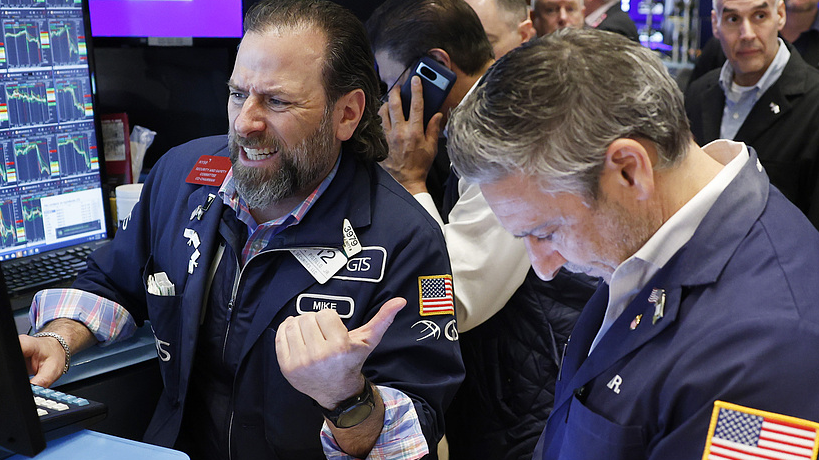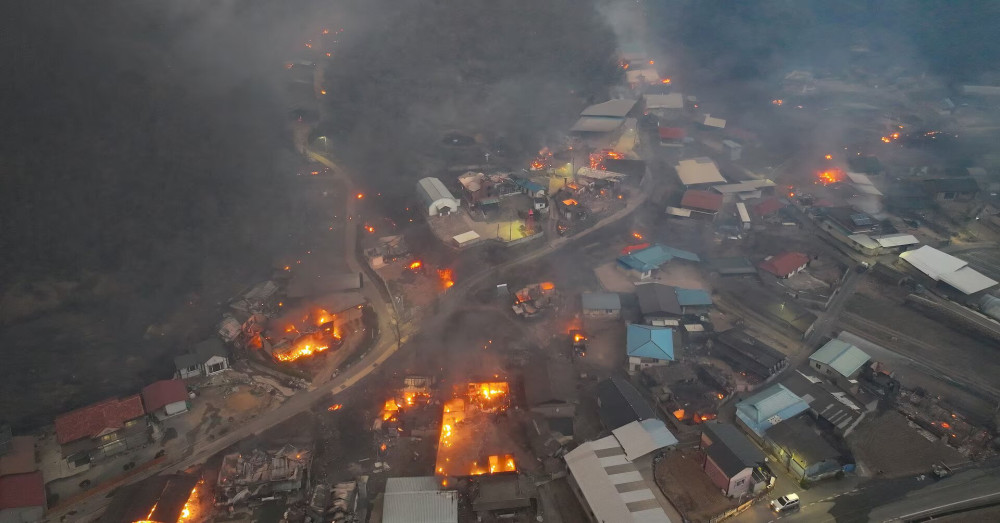Дэлхий дахинд
“One World” онлайн тоглолтыг далимдуулан 43 “одын” гэрээр зочилцгооё

Дуучин Lady Gaga “One World” гэх онлайн тоглолтыг хандив босгохын тулд зохион байгуулж, түүнд нь 55 алдартан нэгдсэн юм. Уг тоглолтын ачаар нийт 128 сая ам. доллар цугларсан гэвэл та итгэх үү?
Гэхдээ энэ үеийг ашиглаад хүмүүс оддын унталгын өрөө, зочны өрөө, арын хашаа ямархуу харагддагийг сайтар харж авчээ. Та бүхэнд ч бас тэдний гэр ямар харагддагийг сонирхуулахаар шийдлээ.
1. Мэттью Макконехигийн 90-ээд оны хэв маягтай оффис.
Хүмүүс бүр түүний 90-ээд оны үеийн хэвлэгч машиныг анзаараад авчээ.
2. Чарли Путын бага зэрэг замбараагүй болсон унтлагын өрөө.
3. Жон Леженд Грэммийн шагналуудаа өрсөн өрөө.
4. Элтон Жон арын хашаандаа.
5. Элли Голдинг модоор чимэглэсэн өрөөндөө байна.
6. Кешагийн дугуйт тэшүүр, өнгөлөг төгөлдөр хуур, бас том цагаан гарыг дүрсэлсэн баримал энд харагдаж байна.
7. Адам Ламберт ургамал ногоотой үнэхээр ойрхон хүн байна.
8. Аквафина гантиг чулуун зуухныхаа өмнө.
9. Женнифер Лопез яг л үнэтэй зочид буудал шиг харагддаг арын хашаандаа гэрлээ асаачихсан дууллаа.
10. Опра олон оффисынхоо аль нэгэнд.
11. Кит Урбан бэлтгэлийн өрөөндөө эсвэл гарааж дотроо.
12. “Rolling Stones” хамтлагийн гишүүд тус тусын зочны өрөөндөө.
13. Лиззогийн шилэн өрөө.
14. Жимми Фаллон модон байшин дотор.
15. Эми Полер илүү дутуу зүйлгүй цулгуй хананы урд.
16. Шон Мендес, Камила хоёр төгөлдөр хууртай өрөөнд хамтдаа.
17. Бейонсе тагтан дээрээ.
18. Эллен гэрэл гээтэй өрөөндөө сууж байна.
19. Пол МкКартни гал тогоо шиг харагдаж байгаа ч дунд нь төгөлдөр хуур тавьсан өрөөндөө.
20. Стиви Уандер хөшигний наана.
21. Lady Gaga өнгө өнгөөр дүүрэн өрөөндөө.
22. Бас хар цагаан судалтай өрөөндөө.
23. Жон Леженд бас нэг өрөөнд.
24. Дон Чидл
25. Сэмюэл Лерой Жексон арын хашаандаа.
26. Билли Рэй Сайрус ба өрөөнийх нь тааз.
27. Пирс Броснан маш өнгөлөг уран зургуудын өмнө.
28. Майкл Бубле хар хананы өмнө.
29. Софи Таккер ширэнгэн ой шиг өрөөндөө.
30. “The Killers” хамтлаг чулуун өрөөнд.
31. Женнифер Хадсон гитарын өрөөнд.
32. Жек Блак арын хашаандаа.
33. Дараа нь гал тогооныхоо өрөөнд.
34. Мэтт Бүмер. Хаана гэдгийг нь ёстой мэдэхгүй юм.
35. Найл Хоран зурагтын өрөөндөө.
36. Селин Дион цав цагаан өрөөндөө.
37. Тейлор Свифт гоё ханатай өрөөндөө.
38. Билли Айлиш цэцэгтэй өрөөндөө.
39. Идрис Элба эхнэрийн хамт.
40. Керри Вашингтон өнгө нөгөөр ялгасан номын тавиурынхаа өмнө.
41. Грэммигийн шагналынхаа урд Сэм Смит.
42. Жэсси Жэй шалан дээрээ суугаад дуулжээ.
43. Фаррелл тагтан дээрээ.

Дэлхий дахинд
The U.S. tariff tantrum: A self-defeating trade war

Editor’s note: Xin Ping is a commentator on international affairs, writing regularly for Xinhua News Agency, CGTN, Global Times, China Daily, etc. The article reflects the author’s views and not necessarily those of CGTN.
Washington’s latest tariff blitzkrieg – slapping “universal” levies on over 180 nations and regions – is setting things on fire at home.
The moment the executive order was signed, U.S. markets went into freefall: the Dow plunged nearly 4 percent, Apple and Nike stocks nosedived, and $6.4 trillion vanished from Wall Street in two days.
This isn’t economic policy. It’s economic arson.
The art of self-sabotage
Will tariffs bring manufacturing home? Despite years of arm-twisting, American tech giant Apple still works with 94.5 percent of its suppliers being overseas.
Apple isn’t an outlier. The semiconductor industry is facing obstacles in reshoring back to the U.S. as well. Intel has paused its Arizona factory. TSMC is delaying U.S. production. The problems hindering “made in America” are systemic and may only be addressed through a broad and profound economic restructuring. Tariffs won’t magically resurrect dead industries; they only inflate prices for already-struggling consumers.
The U.S. tariff spree, unleashed in the name of “America First,” is in fact a masterclass in shooting oneself in the foot. U.S. farmers will be hard hit. In the aftermath of the 2018 China tariff, while U.S. soybean exports eventually rebounded, the farming community suffered irreparable damages: Midwest farm bankruptcies spiked 30 percent, wiping out generations of family farms. Today’s “Tariff 2.0” risks repeating history – but with higher stakes.
China’s counterpunch
Beijing has been defending itself with precise actions, hitting back with matching levies. But its market remains open to others. Germany’s automakers, for instance, now sell more cars in China than at home. ASEAN’s durians and lobsters enter Chinese markets tariff-free under RCEP – a stark contrast to America’s “walled garden” approach.
As China’s commerce ministry stated: “Bullying tactics won’t work. We defend rules, not whims.” Similar tactics have failed before. When the U.S. tried weaponizing small-parcel exemptions to target Chinese goods, U.S. retailers revolted, as 60 percent of affected imports are everyday essentials for low-income households.
Allies: from partners to prey
American allies are not spared either, and their response has also been strong. The EU is poised to approve retaliatory measures. France is warning against “suicidal trade wars.” German industries are lobbying Brussels to hit back harder. Japan is calling the moves “deeply regrettable.”
In Southeast Asia, the irony is thicker than durian pulp as countries like Vietnam face 46 percent tariffs but remain trapped supplying components to U.S. tech giants. An economist in Hanoi reveals the reality: “Trump wants us to be his factory, but not his competitor. That math doesn’t add up.”
The U.S. tariff crusade isn’t just failing – it’s uniting the Global South against Washington. The U.S. only accounts for around 15 percent of global trade. The remaining 85 percent is made up by the rest of the world – including China – and it will not stand idly by and watch the international trade system, the very thing that fostered global prosperity for decades, destroyed by self-serving political motivations.

A woman looks at an electronic stockboard on her computer at a trading company in Hanoi, Vietnam on April 8, 2025. /CFP
The ghost of Smoot-Hawley
History has long given its verdict on tariffs. The 1930 Smoot-Hawley tariffs turned a recession into the Great Depression. The déjà vu is uncanny: U.S. steel tariffs briefly boosted producers but killed 75,000 downstream jobs. American icon motorcycle manufacturer Harley-Davidson was forced to shift production overseas to avoid costs. “Made in America” has become “priced out of America.”
Those in Washington are preaching “short-term pain for long-term gain.” Tell that to the 27 U.S. textile mills shut down in the past 20 months, or the single mom paying 17 percent more for Walmart clothes. Some on Reddit have put it quite well: “Tariffs are taxes on the poor.”
Epilogue: The unlearned lesson
The White House insists this is “historic” – and they’re right. Not since the 1930s has the U.S. so recklessly weaponized trade. But the world has changed: China is deeply integrated into global supply chains, the EU makes its own decisions, and ASEAN won’t ditch prosperity for geopolitics.
The clock is ticking. Every tariff tweet coming from Washington is shredding U.S. credibility. Every market plunge erodes the White House’s “strong economy” narrative. And America’s isolation deepens with every trade deal other countries make on lowered tariffs, such as those between China and ASEAN and European countries.
In the end, it’s not just about the economy. America is turning its back on the world. The path it has chosen is a solitary one.
(If you want to contribute and have specific expertise, please contact us at opinions@cgtn.com. Follow @thouse_opinions on X, formerly Twitter, to discover the latest commentaries in the CGTN Opinion Section.)
Дэлхий дахинд
БНСУ даяар галын нөхцөл байдал ноцтой түвшинд хүрснийг зарлалаа

Дэлхий дахинд
Сөүл хотод авто зам цөмөрч мотоциклтой иргэн унажээ

Өчигдөр буюу даваа гарагт Сөүл хотод авто зам цөмөрч, мотоциклтой иргэн унасан байна. Одоогоор тус иргэнийг аврах ажиллагаа үргэлжилж байгаа аж.
Орон нутгийн цагаар өчигдөр орой 6 цагийн үед Гандун дүүрэг дэх бага сургуулийн ойролцоох авто зам цөмөрч, бараг 20 метрийн өргөнтэй нүх үүссэн байна.
Тус нүх зургаан эгнээтэй замын дөрвийг нь хамарч байгаа бөгөөд нэмж томрох эрсдэлтэй байгаа аж. Улмаар Сөүл хотын захирагч яаралтай арга хэмжээ авахыг үүрэгджээ.
Одоогоор зам цөмөрсөн шалтгааныг тодруулахаар ажиллаж байна.
Гэхдээ албаныхны урьдчилсан байдлаар үзэж буйгаар зам цөмөрсөн шалтгаан нь замын доорх ус дамжуулах хоолой хагарснаас үүдсэн байж болзошгүй гэв.
Осол гарсан замын доор метроны есдүгээр шугамын өргөтгөлийн ажил мөн хийгдэж байжээ.


































































































































